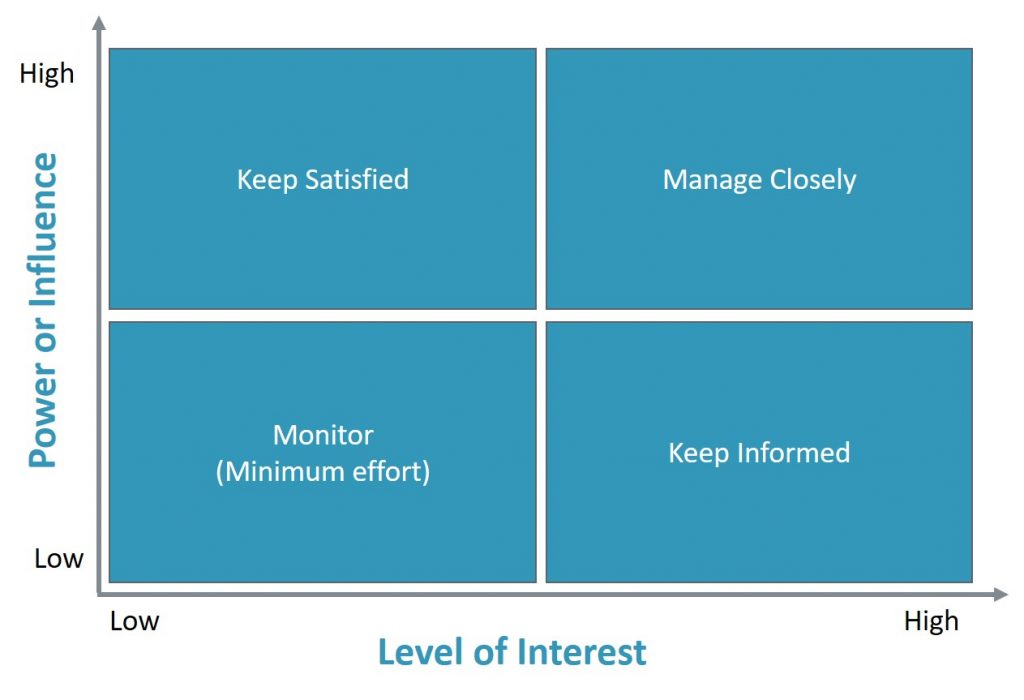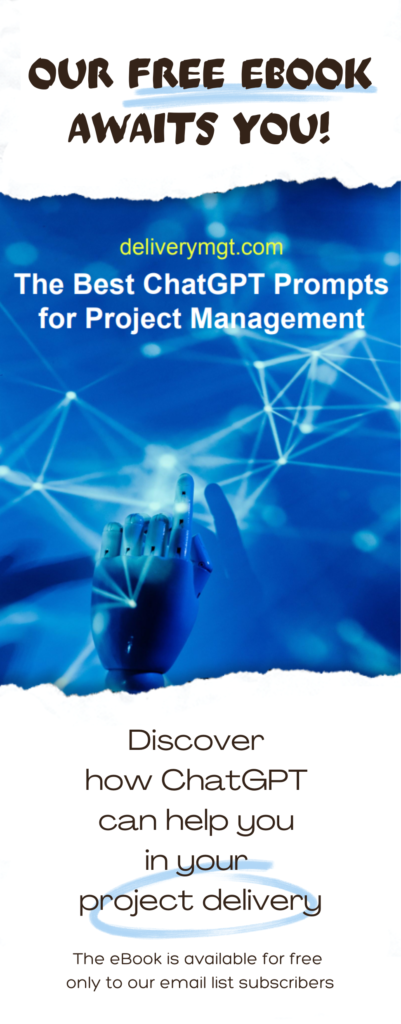
The Power of the Stakeholder Matrix for Project Success
Happy New Year! As we begin 2024, it’s time to level up our project management skills! Understanding your stakeholders is key, so let me introduce the stakeholder matrix – a simple yet powerful tool for categorizing project stakeholders based on their interest and influence. Using this matrix means better communication and engagement with the right people at the right times. The result? More effective project execution and happier stakeholders all around.
What is a Stakeholder Matrix?
At its core, a stakeholder matrix is a simple visual for categorizing the various people and groups who have an interest in or influence over your project. Instead of a big long list of names, the matrix divides stakeholders into four basic quadrants to make them easier to understand and manage.
So first things first, what are influence and interest? Stakeholder influence refers to how much power a person or group has to directly impact key decisions, direction, funding, and other defining aspects of your project. Interest is defined by how personally invested a stakeholder is in your project and how much emphasis they place on its outcome.
Now onto the actual matrix. There are two axes forming four quadrants – influence runs from high to low along the y-axis while interest spans high to low along the x-axis.

By plotting your stakeholders within this grid, you end up with four distinct categories:
- High influence, high interest – your top priority
- High influence, low interest – powerful but not engaged
- Low influence, high interest – major supporters
- Low influence, low interest – complacent or unaware
Assessing stakeholder levels of influence and interest allows you to segment important project players into understandable groups. This then allows us to tailor communications and engagement strategies based on where key individuals and organizations land in the matrix.
Key Stakeholder Categories
Now that we’ve covered the basic matrix setup, let’s dive deeper into the types of stakeholders that typically land in each quadrant.
The high influence, high interest folks carry real project clout and care deeply about what you’re doing. You’ll tend to find your core team here along with project sponsors who bring the funding that keeps work humming. Important end users also slot in here since they interact constantly with your end product or service. Keep these groups deeply engaged because they can make or break your efforts!
Moving to high influence, low interest stakeholders: as the name suggests, they wield a lot of project sway but just aren’t invested day to day. Your steering committee fits here, along with C-suite leaders who control resources and set priorities. Keep them satisfied with regular updates but don’t overload their bandwidth.
Now onto the opposite corner – low influence but high interest groups. These enthusiastic supporters are crucial evangelists! Typical stakeholders here are secondary product or service users hoping to benefit indirectly from your efforts. Keep them cheering loudly on the sidelines by openly sharing relevant news and findings.
Last but not least, we encounter the disengaged and unaware low influence, low interest camp. These could be internal groups who your project impacts indirectly or lightly involved departments spread across a large organization. Use your discretion on engagement, but keep channels open with basic communications to prevent problems.
Creating Your Stakeholder Matrix
Alright, we’ve covered the basics – now I’ll walk through a repeatable step-by-step process so you can start segmenting stakeholders on your current or upcoming initiatives.
First, brainstorm a master list of any and all groups or individuals who are connected to your project. Cast a wide net that includes both internal and external stakeholders. It’s much easier to consolidate later than miss key players early on.
With your brainstormed potential stakeholder list in hand, it’s time to get assessing! Influence depends on factors like decision making clout, financial resources they contribute, or formal authority over aspects of your project. Assess interest based on how invested the stakeholder seems to be and how much emphasis they place on your work versus other priorities.
Once you’ve rated influence and interest for each player, plot them on your matrix template. I prefer large boards with sticky notes or online tools like Miro but an Excel grid works fine too at this stage.
Be prepared to adjust the initial matrix over time as new stakeholders emerge and priorities shift for those involved. Like any project management tool, maintaining a real-time snapshot is crucial for the matrix to remain relevant.
Stakeholder Matrix Limitations & Challenges
No project management tool is perfect, and the stakeholder matrix is no exception. While incredibly useful for categorizing and prioritizing communications with project players, the model does have some inherent limitations and challenges to consider.
First, matrix axes only assess two attributes per stakeholder, but we know people and organizations are multifaceted. Additional factors like their views on project objectives, access to resources, risk tolerance and more also dictate how they participate. Boiling a stakeholder down to just two attributes can oversimplify their complexity.
Speaking of oversimplification – the four quadrant model itself is a reality stretch. In truth, influence and interest likely fall along spectrums rather than clean high-low categories. You might need to fine tune strategies for the stakeholders falling towards quadrant edges.
Last but certainly not least, the effectiveness of your matrix depends wholly on active governance to keep it alive. If created at the project’s start and then forgotten, it can easily become obsolete and lose its relevance. If you do not plan to keep it up to date over time, you might as well consider not creating one in the first place, as it makes no sense to invest time creating an artifact you would not use anyway.
Tips For Success
Let’s wrap with my top tips to drive better project outcomes.
First, get creative on influence and interest evaluation methods rather than just guessing. Survey stakeholders directly if you can or talk to those who engage with them routinely.
As already mentioned, don’t develop your matrix then file it away. Stakeholder attributes change over time. Reassess every few months or before major milestones to keep your model up to date.
Resist the temptation to oversimplify for ease of building matrices too. The four clear quadrants are useful guardrails but real influence and interest likely exist on gradients rather than absolutes. Customize engagement for those on the borders.
Last but not least, don’t build this stakeholder model just because it’s a best practice! Link your matrix directly to real work like communications plans, risk plans and resourcing projections to drive action.
Conclusion
Creating an effective stakeholder matrix may seem daunting if you’ve never built one before. But applying a few key steps around identifying players, assessing influence and interest, and slotting groups into a simple grid opens a world of insight to help project success! Remember to keep your matrix a living document that evolves along with stakeholder needs over time. And tap the power of this model to customize communications and engagement strategies based on where key players land in the quadrants. If you found this deep dive on stakeholder matrices useful, don’t keep it to yourself! Share with teammates and colleagues who have projects firing up so they can level up stakeholder management! And in case of any questions, feel free to reach out on Twitter/X!
Italian cloud computing professional with a strong background in project management & several years of international experience in business consulting. His expertise lies in bridging the gap between business stakeholders & developers, ensuring seamless project delivery. During his free time, he enjoys fatherhood and immersing himself in nature.




